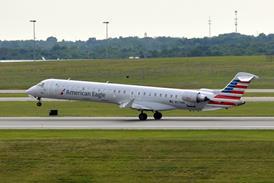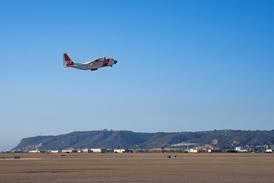Your views about the aerospace industry and our reporting.
Rewarding your contributions
From next month’s issue, we will be rewarding one reader with a free cutaway poster or print of their choice for submitting what we judge to be the best letter contribution.
Your letter can be in response to an article published in Flight International or online on FlightGlobal.com, or relate to other aviation-related topics.
Letters should be no longer than 500 words, and emailed to flight.international@flightglobal.com or sent to the postal address at the foot of this page, for the attention of the editor.
The selected winner will be able to choose one of the prints available via our flightglobalimages.com online store, with a maximum value to be notified through correspondence.

The editor’s decision will be final, and we regret we will not be able to enter into any correspondence regarding our monthly choice.
Carbon jargon
I saw your article titled “SAF and turboprops are best way to decarbonise aviation in short-term” (FlightGlobal.com, 27 April 2023).
It is disappointing to continually see those who have the ability to influence efforts by us humans to significantly alter the global warming issue pushing solutions that will continue to add or maintain current levels of contaminants present in the Earth’s atmosphere, instead of reducing them.
The current emphasis should be to build atmospheric scrubbing and filtering plants that can remove these contaminants from the air. Such technology can be funded by a small surcharge on the use of any fuels or processes that result in producing the unfriendly emissions.
This is currently the only method that will meet the climate goals in time to prevent the environmental collapse that is currently underway and accelerating despite all current efforts to even slow it down.
Via email
Keep searching
“Something will turn up” didn’t work for Mr Macawber in Charles Dickens’ David Copperfield, and it hasn’t worked for the investigation of the 2014 Malaysia Airlines flight MH370 disaster (Flight International, March 2023).
Worse, when things do turn up, they don’t get acted on. Six years ago, a drift analysis showed there had been a gap in the original search for floating debris along the Inmarsat 7th Arc between 22° and 25° south. Four other lines of enquiry suggest this could be where the aircraft came down, yet neither of the extensive searches of the sea floor got that far north.
The aviation community cannot leave the disappearance of MH370 unresolved. It is not aviation’s biggest mystery, but it could be the biggest scandal. Blaming the crew has led nowhere, and put off the day when difficult questions will have to be answered.
Everyone with an interest in safety should be pushing ICAO to give fresh impetus and direction to the search.
Richard Lloyd
Coventry, West Midlands, UK


























